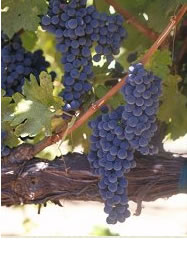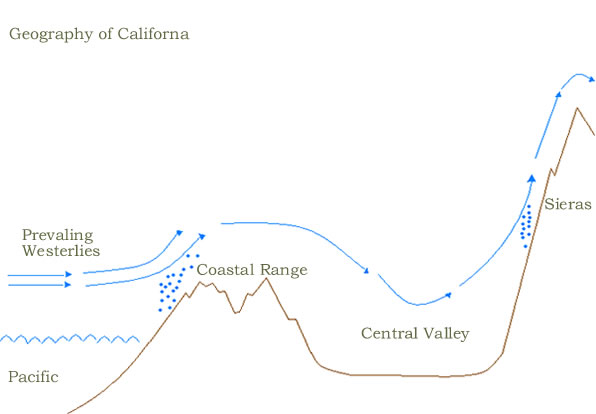














|
 |
 |
- Geography of California
California has one of the most extreme climates
in the world. The prevailing winds in all of California are
the Westerlies that are heavily moisturized after a long
trip across the pacific ocean. At the coast the winds encounter
the coastal mountain range and as they rise over these mountains
they cool down and drop moisture to form the coastal rain
forests with huge Redwoods and Sequoia trees. There are
number of parallel ridges across coastal range and the rain
fall and temperature vary greatly in each of the intervening
valleys (Sonoma, Napa, Central Coast valley).
As winds continue their path from west to east they cross
the central valley of California. The hot valley floor heat
the winds which now dry up the country side creating a long
narrow desert that dominates the heartland of California.
The last hurdle for the winds are the Sierra Mountains.
These mountains are considerably higher than the coastal range
and as the wind climbs over them they release the last bit of
moisture that they have as snow or rain. The released rains
form rivers that flow back to the dry Central Valley and these
rivers provide irrigation water for the Central Valley vineyards.
The grapes of the Central Valley are high in sugar and produce
cheap table wines perfect for blending; but the quality wines
come from Coastal ranges such as Napa Valley which
is the focus of this study.
Figure (1).
Effect of prevailing westerly winds on the climate of California

|
| |